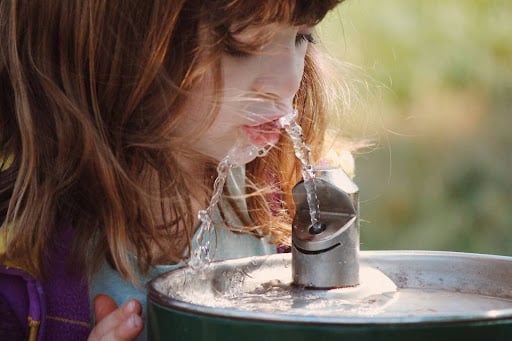
Backflow occurs when water flows in the wrong direction within a plumbing system, allowing contaminants to enter the clean supply. Backflow Prevention Assemblies (BPAs) are critical components in residential, commercial, industrial, and municipal systems. They protect water quality, ensure compliance with plumbing codes, and prevent health hazards by blocking reverse flow.
This guide explains the risks of backflow, how to choose the right device, and the essentials of installation and maintenance. Whether you are a homeowner, business owner, or municipal decision-maker, you will find actionable advice to protect your property, finances, and community.
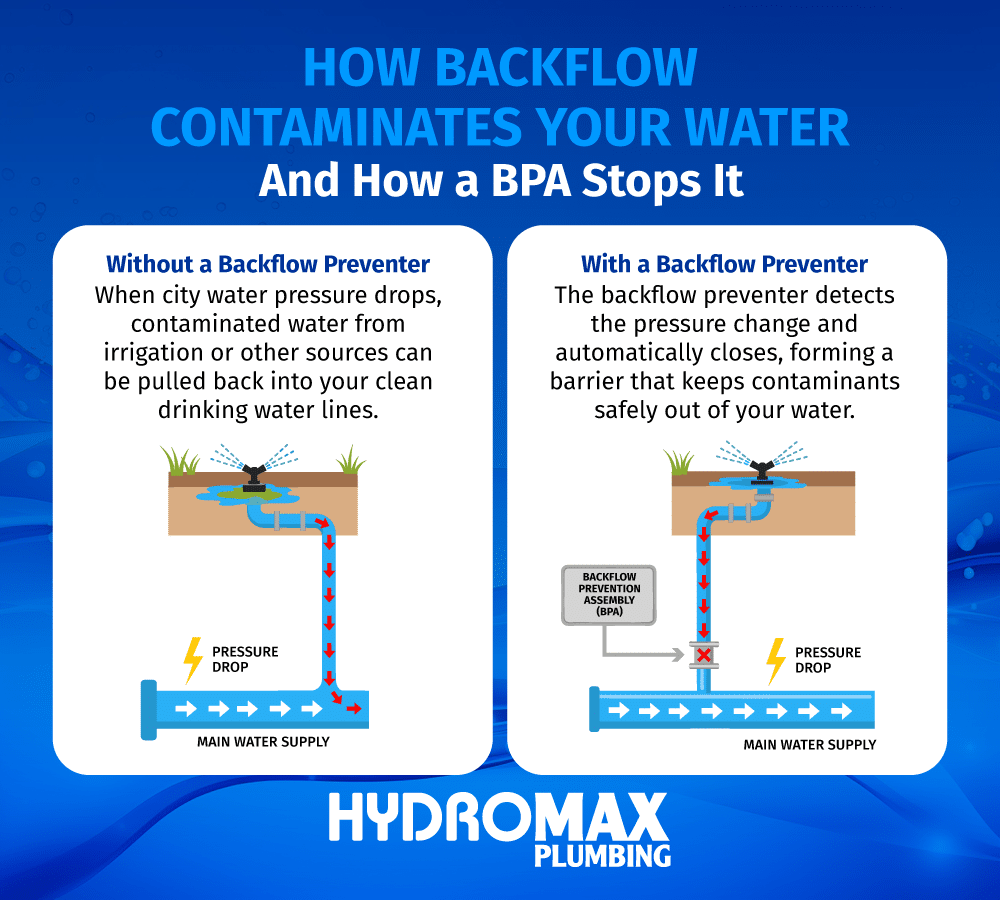
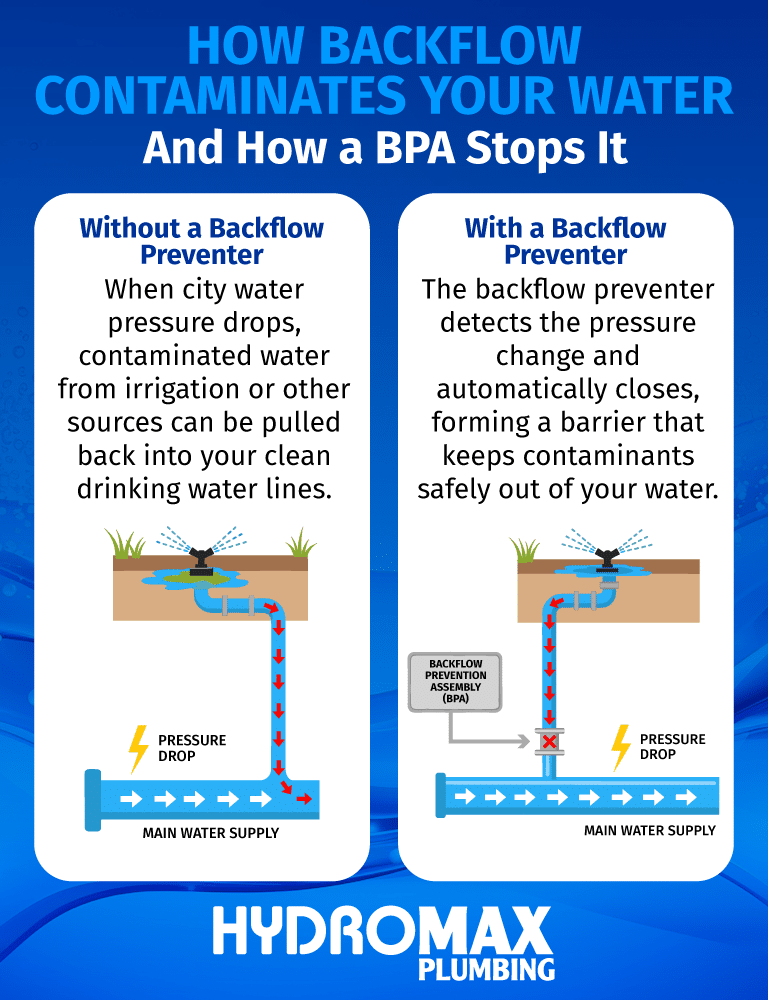
Backflow occurs when water reverses its intended direction in a plumbing system, creating a pathway for contaminants to enter the clean, potable water supply. This can happen due to a sudden drop in water pressure (back-siphonage) or an increase in downstream pressure (back-pressure), turning everyday cross-connections like garden hoses, sprinkler systems, or industrial equipment into serious threats.
The consequences of a backflow incident are severe and impact everyone from homeowners to entire municipalities:
Because these risks exist everywhere, backflow prevention is essential in every setting. Residential systems need protection from common sources like irrigation systems, while commercial properties like restaurants and hospitals require it to meet strict health codes. In industrial and municipal applications, robust backflow prevention is the first line of defense protecting both expensive equipment and the entire community’s water supply.
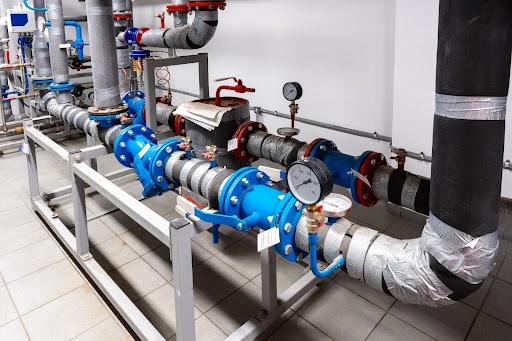
Choosing the right device depends on risk levels, plumbing requirements, and local regulations. The most common types include:
Designed for low-to-medium hazard scenarios, the DCVA uses two check valves that close when backflow conditions occur.
Common Applications: Fire sprinkler systems, residential irrigation, and some commercial lines.
Ideal for high-hazard environments, the RPZ includes two check valves and a relief valve that discharges water in case of failure.
Common Applications: Industrial facilities, high-risk commercial properties, and hospital systems.
A PVB introduces air into the system if pressure drops, preventing siphonage. It is best for outdoor irrigation where back-siphonage is the main concern.
Common Applications: Lawn irrigation and residential sprinkler systems.
An air gap creates a physical separation between water outlets and receiving vessels, eliminating reverse flow risks without mechanical parts.
Common Applications: Sink faucets, dishwasher drains, and commercial kitchen equipment.
Understanding these options helps in selecting a device that meets your property’s specific risks. Consult a professional plumber to ensure compliance with local codes and proper installation.
Selecting the correct Backflow Prevention Assembly (BPA) is a critical decision that balances safety, compliance, and cost. To make the right choice and avoid common mistakes, focus on these key factors.
The most common pitfall is choosing an incompatible device based on cost alone. A proper risk assessment is essential. A simple Pressure Vacuum Breaker (PVB) may be fine for a home sprinkler system, but an industrial facility handling chemicals requires the superior protection of a Reduced Pressure Zone (RPZ) assembly. Have a certified specialist assess your property’s specific cross-connections and potential contaminants to ensure the device matches the hazard level.
Consider your property’s water pressure and usage patterns. A device that is too small for a high-demand commercial system can fail under pressure, while an oversized one may not function correctly. A professional evaluation will ensure the selected assembly operates effectively within your system’s specific parameters.
A frequent and costly mistake is disregarding local plumbing codes. Different jurisdictions have strict requirements for which types of devices are permitted, where they must be installed, and how often they need to be tested. Failure to comply can result in fines and mandatory retrofits. Always verify that your chosen device meets all local standards before installation.
DIY installation is another common error that often leads to performance issues and non-compliance. A professional installation is crucial for proper placement and airtight connections. Furthermore, factor in the long-term costs of annual testing and maintenance. Investing in a quality, durable assembly from a reputable brand can save you significant money on future repairs and liability.
Ultimately, the most reliable way to navigate these factors is to consult a licensed plumber or certified backflow specialist. Their expertise ensures you select a compliant, effective device that provides lasting protection for your property and community.
A successful installation requires planning, careful work, and professional expertise:
Have a qualified professional evaluate your plumbing system to identify hazards, pipe sizes, and layout specifics. This step ensures that you select the appropriate device and identify any pre-existing issues.
Install the device near the water supply entry point for full-line protection. Ensure the location is accessible for routine maintenance and adheres to local clearance requirements.
Turn off the main water supply to create a safe working environment. This prevents unintended water flow during installation, reducing damage risk.
Securely mount the device and connect it to the supply and outlet lines with compatible fittings. Proper alignment and airtight connections are essential for long-term performance.
After installation, test the device to confirm proper valve operation and functionality. For devices with relief valves, verify that they open at the correct pressure differential. For your peace of mind, consider scheduling routine inspections.
After successful installation and testing, obtain a certified report from the professional who performed the testing. In some regions, this report is required to maintain compliance with local regulations.
Regular, scheduled testing ensures that the device continues to function effectively. Annual inspections are typically required, although some high-risk settings may need more frequent checks.
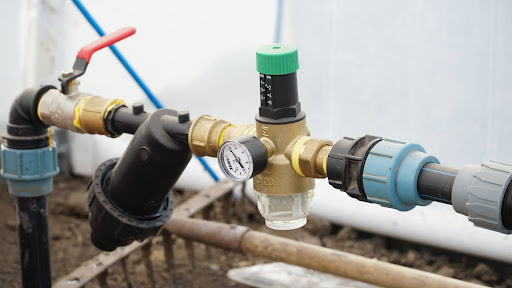
A backflow prevention assembly is not a “set it and forget it” device. Its effectiveness and longevity depend entirely on a proactive maintenance plan. Over time, internal components like seals, springs, and valves can wear down, degrade, or become clogged with debris. Without regular attention, a device can fail when you need it most.
Ongoing maintenance, performed by a certified professional, is essential for protecting your investment and ensuring continuous safety. Key benefits include:
Think of ongoing maintenance not as a cost, but as an insurance policy that protects your property, ensures legal compliance, and safeguards the health of your community.
Backflow prevention requires specialized skills, making professional plumbing services essential. Experienced professionals ensure that the right device is selected, accurately installed, and rigorously tested. At Hydromax Plumbing in Evansville, Indiana, our licensed, bonded, and insured team is available 24/7 for emergency assistance. We handle backflow prevention for residential, commercial, industrial, and municipal clients with precision and reliability.
Hydromax Plumbing offers expert risk assessments, precise installations, and ongoing support through routine testing and maintenance. We work around the clock to help you maintain compliance and protect your water supply.
Ensuring a safe, uncontaminated water supply is crucial for every property. Backflow prevention devices protect against contaminants by blocking reverse water flow, thereby safeguarding public health, infrastructure, and regulatory compliance. By understanding the risks, selecting the appropriate device, and investing in professional installation and regular maintenance, property owners can effectively prevent backflow incidents.
At Hydromax Plumbing, our licensed team in Evansville, Indiana, is committed to 24/7 support for any urgent backflow issues. Don’t leave your water safety to chance—contact us today for reliable solutions that keep your water supply clean and compliant.